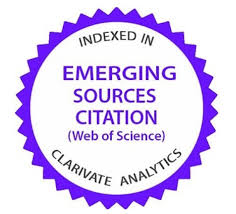The Wit of "Judge Rinder"
Judges, Humour and Popular Culture
DOI:
https://doi.org/10.35295/osls.iisl/0000-0000-0000-1036Palabras clave:
Judge Rinder, Judge Judy, reality shows judiciales, emociones, humor, risa, televisiónResumen
Judge Rinder es un reality show judicial británico. Tiene mucho en común con el arquetipo de Judge Judy, de EEUU; pero hay diferencias. Una consiste en el humor del juez Rinder, y, más en concreto, en su ingenio. Utilizando una base de datos de investigación de los casos de Judge Rinder, el artículo analiza la naturaleza y los efectos del humor en ese escenario judicial. Explora el rol del juez, la forma que adquiere el humor y las interacciones y relaciones sociales que éste genera. Una característica distintiva del análisis es la consideración del impacto de las tecnologías audiovisuales, y de las técnicas y convenciones desarrolladas alrededor de aquéllas, sobre las interacciones y las relaciones sociales que el humor televisivo genera en los espectadores. Mientras la cámara alinea a la audiencia con el juez y la risa contagia a la audiencia la emoción generada por el juez, el artículo advierte contra la deducción de que todos los espectadores experimentan una misma emoción.
Descargas
Metrics
Estadísticas globales ℹ️
|
578
Visualizaciones
|
418
Descargas
|
|
996
Total
|
|
Citas
Ang, I., 1982. Watching Dallas: Soap Opera and the Melodramatic Imagination. London: Methuen.
Asimow, M., 1999. Justice with an attitude-Judge Judy and the daytime television bench. Judges Journal, 38, 24-28.
Babuscio, J., 2004. Camp and gay sensibility. In: H.M. Benshoff and S. Griffith, eds., Queer Cinema, the Film Reader. New York: Routledge, 121-136.
BBC, 2016. Judge Rinder. BBC [online], Strictly Come Dancing. Available from: http://www.bbc.co.uk/programmes/profiles/5SLnPrKL1X4wfJ7m8J1rcM5/judge-rinder [Accessed 8 October 2018].
Bergman Blix, S., and Wettergren, Å., 2018. Humour in the Swedish court: Managing emotions, status and power. In: J. Milner Davis and S. Roach Anleu, eds., Judges, Judging and Humour. Cham: Palgrave Macmillan, 179-210. DOI: https://doi.org/10.1007/978-3-319-76738-3_6
Bergson, H., 1911. Laughter and Essay on the Meaning of the Comic. Trans.: C. Brereton and F. Rothwell. London: Macmillan and Co. DOI: https://doi.org/10.1037/13772-000
Billig, M., 2005. Laughter and Ridicule: Towards a Social Critique of Humour. London: Sage. DOI: https://doi.org/10.4135/9781446211779
Black, D.A., 2005. Narrative determination and the figure of the judge. In: M. Freeman, ed., Law and Popular Culture. Current Legal Issues, 7. Oxford University Press, 677-687. DOI: https://doi.org/10.1093/acprof:oso/9780199272235.003.0037
Boxer, D., and Cortés-Conde F., 1997. From bonding to biting: Conversational joking and identity display. Journal of Pragmatics [online], 27(3), 275-294. Available from: https://doi.org/10.1016/S0378-2166(96)00031-8 [Accessed 27 February 2019]. DOI: https://doi.org/10.1016/S0378-2166(96)00031-8
Clover, C., 1998. Movie Juries. De Paul Law Review [online], 48(2), 389-406. Available from: https://via.library.depaul.edu/law-review/vol48/iss2/10 [Accessed 27 February 2019].
Crawford, M., 2003. Gender and humor in social context. Journal of Pragmatics [online], 35(9), 1413-1430. Available from: https://doi.org/10.1016/S0378-2166(02)00183-2 [Accessed 27 February 2019]. DOI: https://doi.org/10.1016/S0378-2166(02)00183-2
Critchley, S., 2002. On Humour. London: Routledge.
Deleuze, G., 1986. Cinema 1: The Movement-Image. Trans.: H Tomlinson and B Habberjam. Minneapolis: University of Minnesota Press.
Epstein, M., 2001. Judge Judy, Mablean and Mills: How courtroom programs use law to parade private lives to mass audiences. UCLA Entertainment Law Review [online], 8(3) 129-141. Available from: https://escholarship.org/uc/item/0pd249kt [Accessed 27 February 2019].
Foust, C., 2004. A return to feminine public virtue: Judge Judy and the myth of the tough mother. Women’s Studies in Communication [online], 27(3), 269-293. Available from: https://doi.org/10.1080/07491409.2004.10162477 [Accessed 27 February 2019]. DOI: https://doi.org/10.1080/07491409.2004.10162477
Glenn, P., 2003. Laughter in Interaction. Cambridge University Press. DOI: https://doi.org/10.1017/CBO9780511519888
Grindstaff, L., 2002. The Money Shot: Trash, Class, and the Making of TV Talk Shows. Chicago, IL / London: University of Chicago Press. DOI: https://doi.org/10.7208/chicago/9780226309088.001.0001
Holmes, J., 2000, Politeness, power and provocation: How humour functions in the workplace. Discourse Studies [online], 2(2), 159-185. Available from: https://doi.org/10.1177/1461445600002002002 [Accessed 27 February 2019]. DOI: https://doi.org/10.1177/1461445600002002002
Holmes, J., and Marra, M., 2002. Having a laugh at work: how humour contributes to workplace culture. Journal of Pragmatics [online], 34(12), 1683-1710. Available from: https://doi.org/10.1016/S0378-2166(02)00032-2 [Accessed 27 February 2019]. DOI: https://doi.org/10.1016/S0378-2166(02)00032-2
Horton, D., and Wohl, R., 1956. Mass communication and para-social interactions: observations on intimacy at a distance. Psychiatry [online], 19(3), 215-229. Available from: https://doi.org/10.1080/00332747.1956.11023049 [Accessed 27 February 2019]. DOI: https://doi.org/10.1080/00332747.1956.11023049
Hunter, I.Q., and Porter, L., eds., 2012 British Comedy Cinema. London: Routledge. DOI: https://doi.org/10.4324/9780203146330
ITV Studios, n.d. Judge Rinder [online]. Available from: https://itvstudios.com/programmes/judge-rinder [Accessed 8 October 2018].
Judge John Hack, 2014. Exclusive interview: Judge Rinder on life as Britain’s newest reality TV star. Legal Cheek [online], 15 August. Available from: https://www.legalcheek.com/2014/08/exclusive-interview-judge-rinder-on-life-as-britains-newest-reality-tv-star/ [Accessed 8 October 2018].
Kotthoff, H., 2006. Gender and humor: The state of the art. Journal of Pragmatics [online], 38(1), 4-25. Available from: https://doi.org/10.1016/j.pragma.2005.06.003 [Accessed 27 February 2019]. DOI: https://doi.org/10.1016/j.pragma.2005.06.003
Levi, R., 2005. The Celluloid Courtroom: A History of Legal Cinema. Westport, CT: Prager. DOI: https://doi.org/10.5040/9798400624056
Lorenzo-Dus, N., 2008. Real Disorder in the Court: An Investigation of Conflict Talk in US Television Courtroom Shows. Media, Culture and Society [online], 30(1), 81-107. Available from: https://doi.org/10.1177/0163443708088613 [Accessed 27 February 2019]. DOI: https://doi.org/10.1177/0163443708088613
Lovell Banks, T., 2008. Here comes the judge! Gender distortion on TV reality court shows. University of Baltimore Law Forum [online], 39(1), 38-56. Available from: http://scholarworks.law.ubalt.edu/lf/vol39/iss1/6 [Accessed 27 February 2019].
Machura, S., 2009. German Judge shows: migrating from the courtroom to the television studios. In: M. Asimow, ed., Lawyers in Your Living Room: Law on Television. New York: American Bar Association, 321-332.
Medhurst, A., 2007. A National Joke: Popular Comedy and English Cultural Identities. London: Routledge. DOI: https://doi.org/10.4324/9780203022566
Moran, L.J., 2017. [Notes on a visit to Manchester to watch a recording of Judge Rinder]. 28th November 2017. On file with the author.
Moran, L.J., 2018. What’s a box of “Bakewell Tarts” got to do with it? Performing gender as a judicial virtue in the theatre of justice. In: J. Milner Davis and S. Roach Anleu, eds., Judges, Judging and Humour. Cham: Palgrave Macmillan, 211-239. DOI: https://doi.org/10.1007/978-3-319-76738-3_7
Moran, L.J., forthcoming. Law, Judges and Visual Culture: Picturing the Judge. London: Routledge.
Moran, L.J., Skeggs, B., and Herz, R., 2010. Ruth Herz Judge playing Judge Ruth Herz: reflections on the performance of judicial authority. Law, Text, Culture [online], 14(1), 198-220. Available from: https://ro.uow.edu.au/ltc/vol14/iss1/12 [Accessed 27 February 2019]. DOI: https://doi.org/10.14453/ltc.572
Olsen, G., 2013. Intersections of Gender and Legal Culture in Two Women Judge Shows: Judge Judy and Richterin Barbara Salesch. In: H. Peterson, J. M. Vilaverde and I. Lund Andersen, eds., Contemporary Gender Relations and Changes in Legal Culture. Copenhagen: Djøf, 29-58.
Palmer, J., 1994. Taking Humour Seriously. London: Routledge.
Papke, D.R., 2007. From Flat to Round: Changing Portrayals of the Judge in American Popular Culture. Journal of the Legal Profession [online], 31, 127-151. Available from: https://doi.org/10.2139/ssrn.902125 [Accessed 27 February 2019]. DOI: https://doi.org/10.2139/ssrn.902125
Parvulescu, A., 2017. Even laughter? From laughter in magic theatre to the laughter assembly line. Critical Inquiry [online], 43, 506-526. Available from: https://www.journals.uchicago.edu/doi/pdfplus/10.1086/689673 [Accessed 27 February 2019]. DOI: https://doi.org/10.1086/689673
Pramaggiore, M., and Wallis, T., 2008. Film: A Critical Introduction. 2nd ed. London: Lawrence King.
Provine, R.R., 1996. Laughter. American Scientist [online], 84(1), January-February, 38-45. Available from: https://www.jstor.org/stable/29775596 [Accessed 27 February 2019].
Provine, R.R., 2000. Laughter: A Scientific Study. Harmondsworth: Penguin.
Roach Anleu, S., and Mack, K., 2018. Judicial humour and inter-professional relations in the courtroom. In: J. Milner Davis and S. Roach Anleu, eds., Judges, Judging and Humour. Cham: Palgrave Macmillan, 141-178. DOI: https://doi.org/10.1007/978-3-319-76738-3_5
Roach Anleu, S., and Milner Davis, J., 2018. Thinking about Judges, judging and humour: The intersection of opposites. In: J. Milner Davis and S. Roach Anleu, eds., Judges, Judging and Humour. Cham: Palgrave Macmillan, 1-39. DOI: https://doi.org/10.1007/978-3-319-76738-3_1
Roach Anleu, S., Mack, K., and Tutton, J., 2014. Judicial humour in the Australian courtroom. Melbourne University Law Review, 38, 621-265.
Robson, P., 2007. Lawyers and the legal system on TV: the British experience. International Journal of Law in Context [online], 2(4), 333-362. Available from: https://doi.org/10.1017/S1744552306004010 [Accessed 27 February 2019]. DOI: https://doi.org/10.1017/S1744552306004010
Sargent, A., 2016. Visions of vindication: Law, Affect and the Intimate Public Sphere of Judge Judy. Signs: Journal of Women in Culture and Society [online], 41(3), 653-676. Available from: https://doi.org/10.1086/684241 [Accessed 27 February 2019]. DOI: https://doi.org/10.1086/684241
Scarduzio, J., 2011. Maintaining order through deviance: the emotional deviance, power and professional work of municipal court judges. Management Communication Quarterly [online], 25(2), 283-310. Available from: https://doi.org/10.1177/0893318910386446 [Accessed 27 February 2019]. DOI: https://doi.org/10.1177/0893318910386446
Schnurr, S., 2009. Constructing leader identities though teasing at work. Journal of Pragmatics [online], 41(6), 1125-1138. Available from: https://doi.org/10.1016/j.pragma.2008.10.002 [Accessed 27 February 2019]. DOI: https://doi.org/10.1016/j.pragma.2008.10.002
Simpson, O., 2017. Brits’ favourite TV shows influence career choices. Fletchers Solicitors [online], 8 February. Available from: https://www.fletcherssolicitors.co.uk/news/careers-on-the-box/ [Accessed 8 October 2018].
Sinfield, A., 1991. Private Lives/Public Theatre: Noel Coward and the politics of homosexual representation. Representations [online], 36, 43-63. Available from: https://doi.org/10.2307/2928631 [Accessed 27 February 2019]. DOI: https://doi.org/10.2307/2928631
Smith, J., 2005. The frenzy of the audible: pleasure, authenticity, and recorded laughter. Television and New Media [online], 6(1), 23-47. Available from: https://doi.org/10.1177/1527476404268114 [Accessed 27 February 2019]. DOI: https://doi.org/10.1177/1527476404268114
The Guardian, 2017. Why handbag dogs are going out of fashion. The Guardian [online], 16 January. Available from: https://www.theguardian.com/lifeandstyle/shortcuts/2017/jan/16/handbag-dogs-fashion-accessories-dogs-trust [Accessed 8 October 2018].
Thompson, J.B., 2005. The new visibility. Theory, Culture & Society [online], 22(6), 31-51. Available from: https://doi.org/10.1177%2F0263276405059413 [Accessed 27 February 2019]. DOI: https://doi.org/10.1177/0263276405059413
Wittgenstein, L., 1980. Culture and Value. Trans.: P. Winch. Oxford: Blackwell.
Wood, H., 2018 From Judge Judy to Judge Rinder and Judge Geordie: Humour, emotion and “televisual legal consciousness”. International Journal of Law in Context [online], 14(4), 581-595. Available from: https://doi.org/10.1017/S1744552318000253 [Accessed 8 October 2018]. DOI: https://doi.org/10.1017/S1744552318000253
Zijdervelt, A.C., 1983. The sociology of humor and laughter. Current Sociology [online], 31, 3–100. Available from: https://doi.org/10.1177/001139283031003002 [Accessed 8 October 2018]. DOI: https://doi.org/10.1177/001139283031003005
Descargas
Publicado
Cómo citar
Número
Sección
Licencia
Derechos de autor 2019 Leslie James Moran

Esta obra está bajo una licencia internacional Creative Commons Atribución-NoComercial-SinDerivadas 4.0.
Los autores conservan el copyright de sus trabajos, que se publicarán en OSLS bajo una licencia Creative Commons Reconocimiento NoComercial SinObraDerivada. Puede consultar más detalles en: http://es.creativecommons.org/licencia/. Si no está de acuerdo con esta licencia, por favor, póngase en contacto con nosotros.
El autor concede los permisos necesarios para difundir la información bibliográfica del artículo, incluyendo el resumen, y autorizar a otros, incluyendo las bases de datos bibliográficas, de índices y servicios de alerta de contenidos, a copiar y comunicar esta información.
Para más información sobre los permisos para distribuir su artículo en cada fase de la producción, por favor, lea nuestra Política de Autoarchivo y Divulgación (en inglés).
Las condiciones de copyright con el nombre de autores y co-autores, y la licencia Creative Commons se mostrarán en el artículo. Estas condiciones se deben aceptar como parte del proceso de envío de un artículo a la revista. Por favor, asegúrese de que todos los co-autores se mencionan correctamente, y que entienden y aceptan estos términos.





















